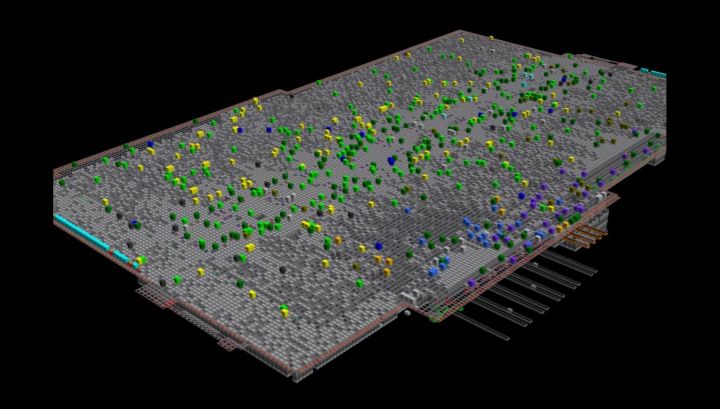
Ocado is England’s largest online-only grocery delivery company. It started from the ground up as an online retailer only, so the company had no actual stores to hamper its growth. The robot workers, more than 1,000 of them in all, were developed with the assistance of U.K. manufacturer Tharsus.
To operate efficiently, the robots need to accelerate and decelerate quickly, be able to carry and deliver heavy payloads, and operate for several hours on only a single electric charge.
The vast grid has containers underneath each opening filled with all the products advertised on the Ocado website — more than 50,000 in all. The robots speed across the rails at 13 feet per second, passing within millimeters of each other, retrieving items and ferrying them to a drop-off point on the grid. Human workers underneath then assemble the order and prepare it for delivery.
For restocking, the procedure works in reverse — the robots pick up items from the drop-off point and disseminate them to the appropriate containers.
“The level of performance Ocado can now achieve is a revolution for grocery logistics,” the company says at its website. “The new facility can pick a customer’s order of around 50 items in a few minutes compared to several hours at existing fulfilment centres.”
The basic idea for the automated warehouse came from the shipping industry, Paul Clarke of Ocado told the website co.design, describing how “shipping containers are stacked one on top of one another and then moved around by cranes acting above the stacks.”
It seems like this advanced tech could overcome some of the challenges faced by other online retailers. Because the Ocado system was developed exclusively for grocery delivery, it might face some difficulties transitioning to other industries. That’s why the company is offering it as a service platform, rather than selling the technology outright.
Clarke claims that his company is adding jobs, rather then replacing human professions with robots. Its service is continually expanding, but most of the jobs it’s creating may be in building its massive new automated warehouses.


